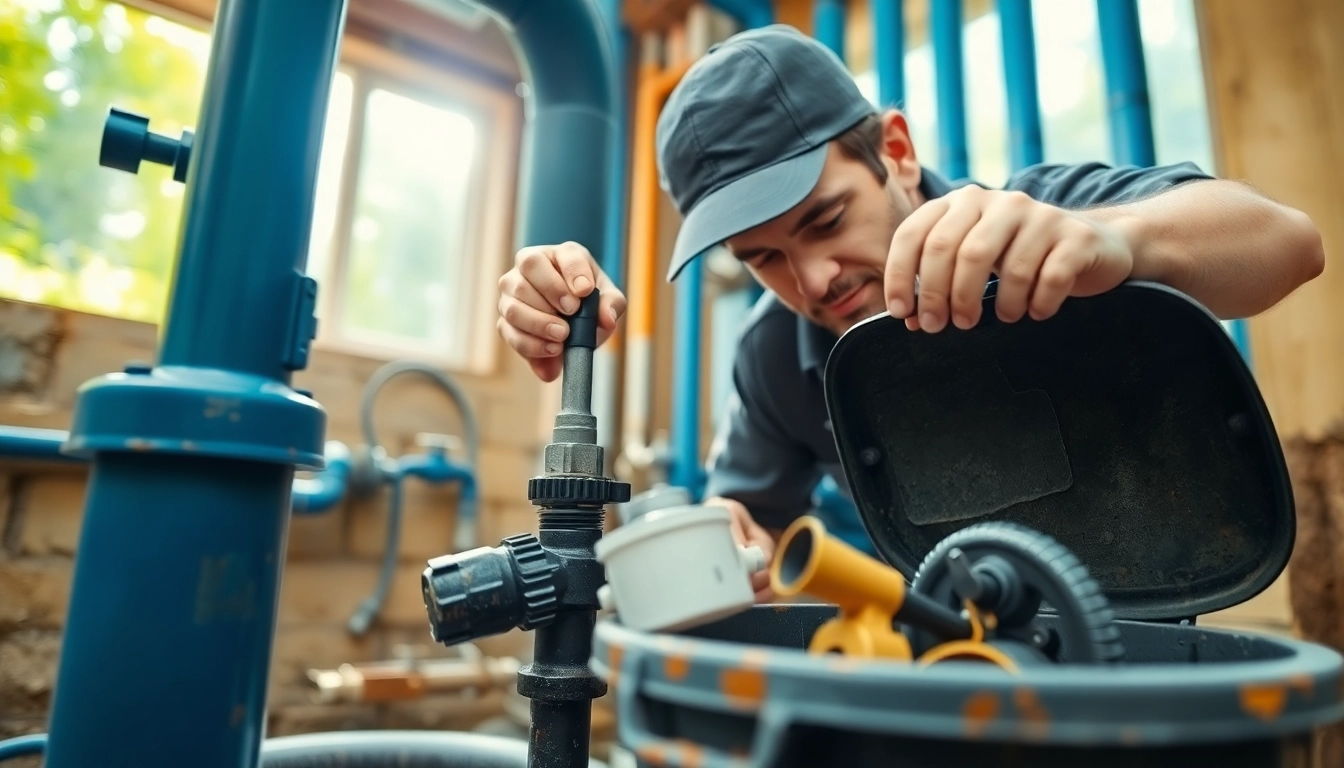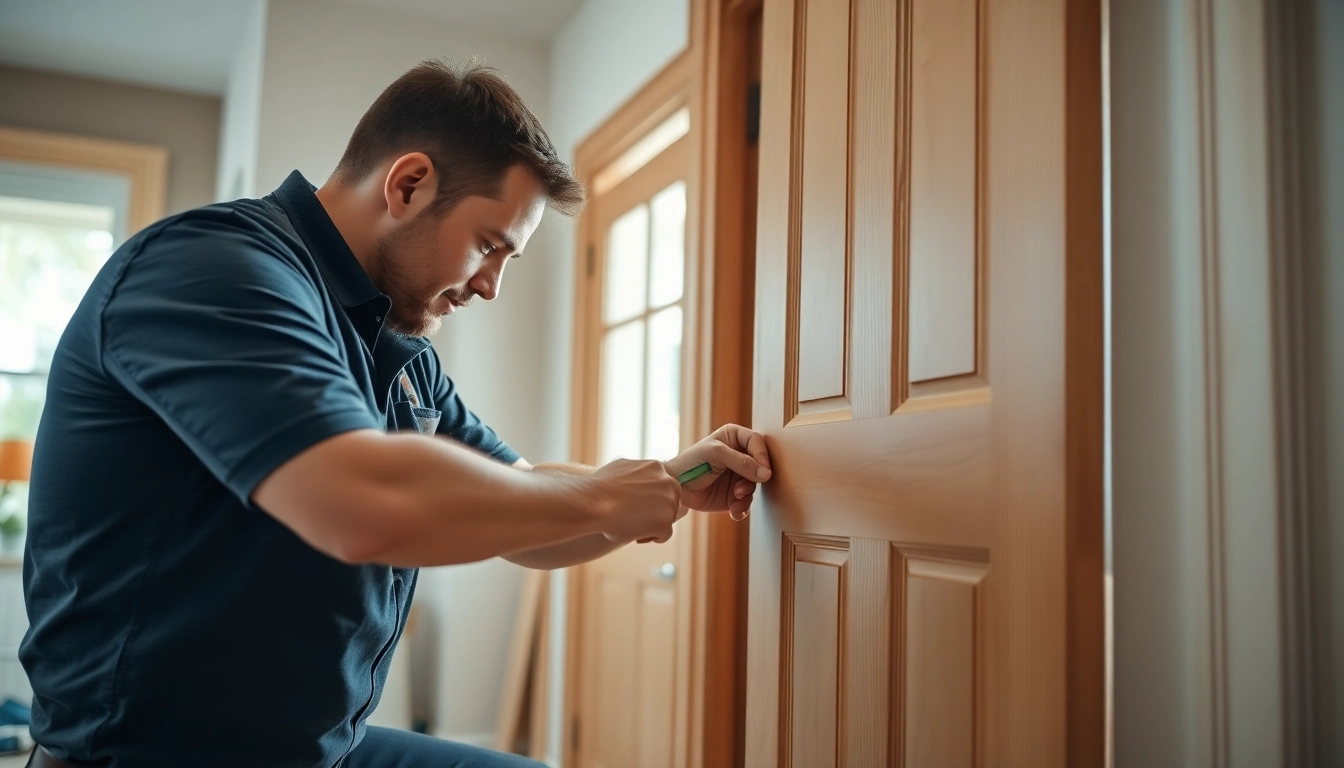Understanding Well Pump Replacement
The process of well pump replacement is one that many homeowners face at some point due to wear and tear or inefficiency of older pumps. Understanding what a well pump is, the symptoms that indicate a need for replacement, and the significant benefits of addressing these issues promptly can greatly enhance your decision-making process. If you’re considering this replacement, you can gain a clearer insight into the whole scenario by checking out resources on well pump replacement services.
What is a Well Pump?
A well pump is a device that lifts groundwater from a well to the surface for various uses, such as irrigation, drinking, or household needs. These essential components come in various types, primarily submersible and jet pumps, each designed to handle different depths and situations. Submersible pumps are typically installed below the water level in the well, providing a silent operation and efficient water delivery, while jet pumps are situated above the ground and are used primarily in shallow wells.
Signs You Need a Well Pump Replacement
Recognizing the signs that your well pump may need replacement is crucial. Some common indicators include:
- Inconsistent Water Pressure: If you notice fluctuations in water pressure or intermittent bursts of low flow, your pump may be struggling.
- Strange Noises: Sounds such as grinding, rattling, or constant running can indicate mechanical issues within the pump.
- Water Quality Issues: Changes in the color, taste, or odor of your water can signal pump failure or contamination.
- Dry Well: If you’re experiencing no water despite the pump running, it may indicate that the well is dry or the pump is malfunctioning.
- Age of the Pump: Pumps that are older than a decade may show diminished efficiency and increased risk of failure, suggesting a proactive replacement approach is wise.
Benefits of Timely Well Pump Replacement
Making the decision to replace your well pump promptly offers several benefits:
- Improved Efficiency: Newer pumps often incorporate advanced technology, leading to energy savings and improved water delivery.
- Better Water Quality: Replacing an old pump can help restore clarity and safety to your water supply.
- Reduced Risk of Breakdowns: Regular replacement minimizes the risk of sudden failures that can lead to significant inconvenience and emergency repair costs.
- Increased Property Value: A functioning and efficient well pump can enhance the overall appeal and value of your property.
Choosing the Right Well Pump
Once you’ve determined that a replacement is necessary, the next step is selecting the right well pump. Various factors will influence your choice, ensuring you’ll acquire a pump that suits your specific needs.
Types of Well Pumps for Replacement
Understanding the two primary types of well pumps is essential:
- Submersible Pumps: Ideal for deep wells, these pumps are submerged in water and typically have greater efficiency. They are generally quieter and can pump water more effectively over long distances.
- Jet Pumps: Suited for shallow wells, jet pumps use a combination of suction and pressure to draw water to the surface. While more visible than submersible pumps, they may not work efficiently at greater depths.
Factors to Consider for Well Pump Selection
Several factors should guide your selection process:
- Depth of the Well: This directly influences whether a submersible or jet pump is appropriate.
- Water Demand: Examine how much water your household or agricultural practices require to select a pump with the right capacity and horsepower.
- Type of Well: The well construction and water quality will influence the pump design that you select.
- Energy Efficiency: Opting for energy-efficient models not only lowers your bills but also benefits the environment.
Cost Implications of Different Types of Well Pumps
When it comes to budgeting for your new pump, it’s important to consider the total cost implications. Factors such as the type of pump, installation fees, and ongoing maintenance will all affect the overall expense. Here’s a general breakdown:
- Submersible Pumps: These typically range from $200 to over $1,500, depending on horsepower and quality. Installation can add an additional $500 to $1,500.
- Jet Pumps: Usually cheaper to purchase, jet pumps typically range from $150 to $800, with installation costs varying from $200 to $800.
Overall, the total cost for a well pump replacement can vary widely, with estimates generally landing between $2,800 to $6,000, depending on various factors.
The Well Pump Replacement Process
Replacing a well pump might seem daunting, but understanding the process demystifies it, ensuring you approach it systematically.
Step-by-Step Guide to Replacing a Well Pump
The replacement process involves several key steps:
- Assess the Situation: Start by verifying that the pump indeed needs replacement and identifying any additional repairs or updates needed for the system.
- Gather Necessary Tools: Assemble all required tools, which typically includes a wrench, screwdrivers, pliers, and possibly a crane if the pump is particularly heavy.
- Shut Down Power: Ensure to cut off all electrical power to the pump to prevent any hazards during the replacement.
- Remove the Old Pump: Carefully detach the old pump from power and plumbing connections, pulling it from the well casing if necessary.
- Install the New Pump: Following the manufacturer’s instructions, install the new pump securely, ensuring all electrical and plumbing connections are tight.
- Test the System: After installation, turn the power back on and test the pump to ensure it operates efficiently.
Tools Needed for Well Pump Replacement
The tools necessary for replacing a well pump may vary depending on the specific pump and the existing setup. Common tools include:
- Pipe wrenches
- Screwdrivers (flathead and Phillips)
- Multimeter for electrical checks
- Pliers
- Replacement wire and fittings
- Cranes or hoists (for large or heavy pumps)
Common Challenges and How to Overcome Them
While replacing a well pump, you may encounter various challenges. Here are some common issues and how to handle them:
- Difficulty Removing the Old Pump: If the old pump is firmly lodged, consider using a hoist or pulling device.
- Electrical Issues: If electrical work is beyond your expertise, hiring a qualified electrician is advisable.
- Compatibility Issues: Ensure that the new pump matches the existing pipe diameter and fittings. Measuring accurately before purchase can prevent costly mistakes.
Maintenance Tips After Well Pump Replacement
Proper maintenance following well pump replacement can significantly extend the life of your new pump and ensure optimal performance.
Regular Maintenance Practices
Implementing consistent maintenance provides long-term benefits:
- Routine Inspections: Regular checks of the pump and system can identify issues before they become serious problems.
- Monitor Water Quality: Regularly test your water to check for quality and detect any contaminants early.
- Clean the System: Keeping your well and pump clean minimizes the risk of clogs or other problems.
Signs of Potential Issues Post-Replacement
Post-replacement, be vigilant for these warning signs that may indicate issues:
- Reduced water pressure or flow
- Unusual sounds from the pump
- Water discoloration or unpleasant odors
- Frequent on-and-off cycling of the pump
Best Practices for Long-lasting Well Pumps
Adhering to best practices ensures longevity:
- Pump Selection: Choose pumps known for durability and reliability.
- Water Table Awareness: Be aware of seasonal variations in your water table to help predict potential pump issues.
- Adjust Pressure Settings: Keeping the pressure settings optimal based on household demand may prevent wear on the pump.
Finding a Professional for Well Pump Replacement
Sometimes, hiring a professional is necessary, especially for complex installations. Knowing how to find a reliable expert can save you time and money.
When to Hire a Professional Installer
Consider professional help for pump replacements in situations such as:
- High complexity in installation
- Lack of familiarity with electrical or plumbing work
- If specific local codes require professional installation
What to Look for in a Well Pump Replacement Service
When selecting a service provider, seek out contractors who exhibit the following qualities:
- Licensure and insurance
- Positive customer reviews and referrals
- Transparency in pricing and service agreements
- Experience in well pump installation
Cost Estimates and Budgeting for Installation
Understanding the expected costs can alleviate stress on your budget:
- Estimate for well pump replacement, including labor and materials, can range from $2,800 to $6,000.
- Request multiple quotes to compare, and ensure clarity on what is included.
- Consider potential additional costs for repairs that may arise during the replacement process.

